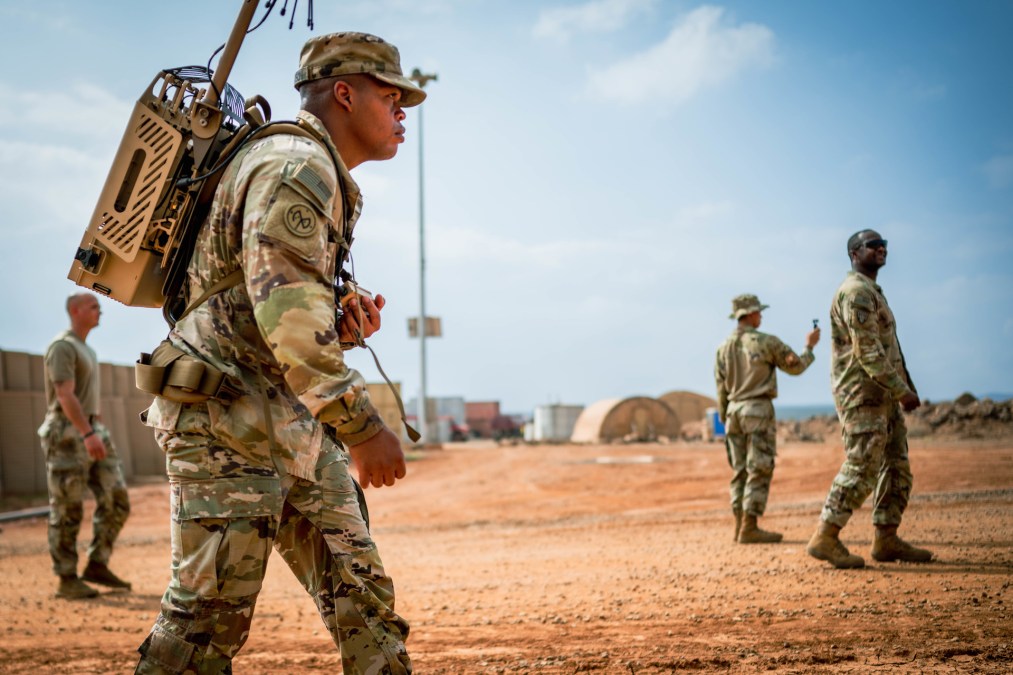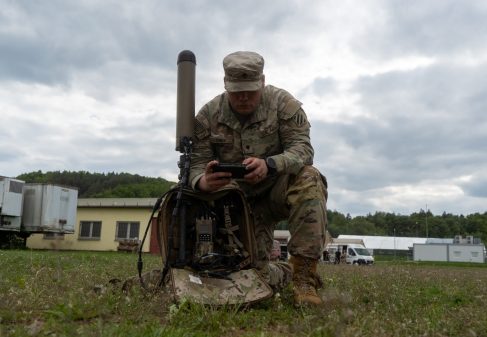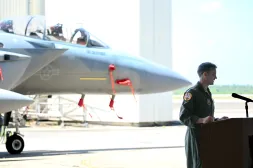Army looking to get reprogrammers at the edge

AUGUSTA, Ga. — The Army is working to get developers at the tactical edge to rapidly reprogram signals to outpace adversaries in the digital and electromagnetic realm.
In the cat-and-mouse game of electronic warfare or electromagnetic spectrum operations — where adversaries seek to deny access to the spectrum for communications or navigation through jamming — agility and speed are paramount. Once a signal is detected, forces must work to reprogram systems to counter it.
For the Army, the challenge is that sending those signals back over the network to engineers in labs away from the battlefield not only requires significant bandwidth, which may be limited, but also poses its own electronic warfare vulnerability itself.
“When we go into contact … we don’t have … reach back. You fight as an isolated force within your bubble that you were put at the edge to do,” Col. Gary Brock, director and Army capabilities manager for electronic warfare, said during a presentation at TechNet Augusta Tuesday. “If you go to radiate to send all that data back, you become the target.”
As a result, the Army is working to get the developers to the battlefield to prevent sending signals back and forth and also speed up the delivery of capability.
“How do we prevent that? It’s exactly that. We put the green suitors in the reprogramming seat, we put the green suitors in the tailor and the techniques at the edge seat and we put them with the EW capabilities, and we mission tailor those based on the performance that we’re required to do within that commander’s footprint,” Brock said.
The Army initiated a pilot in 2021 called Starblazor that looked at this issue. However, Brock told DefenseScoop that not much came from the pilot at the time.
“Starblazor was the initial effort to study what it is the Army needs to do to get after this problem across the entire Army. What is the service solution,” he told DefenseScoop in an interview at TechNet.
This was partially due to the fact that at the time, the Army didn’t have many developers, known in Army nomenclature as 17Ds.
Now, with more of these personnel trained and going to the force, they can start to revive the effort.
“As we’re starting to get capabilities to the field, we’re relooking at it, because we didn’t have 17 Deltas at the time,” Brock said.
He noted the Army is taking lessons from the Air Force and its 350th Spectrum Warfare Wing, a first-of-its-kind unit activated in June 2021 to enable, equip and optimize the fielding of electromagnetic spectrum capabilities.
Brock said the 350th has placed signals intelligence professionals, electronic warfare personnel, platform developers and technique developers under a single commander.
“Think about the power of that. You want the entire enterprise, which for the Army exists between secretariat levels under a single operational command,” he told the conference.
With the right mix of Army developers coming on board, the service is looking at how to apply the 350th model to the Army, especially since the Air Force’s personnel are typically away from the battlefield, which isn’t how the Army would fight.
“What we’re doing on the reprogramming side is how do we get that under an operational command such as ARCYBER with the green suitors in the loop,” Brock told DefenseScoop. “Not only the arsenal forward, which would be the techniques that are matured, but the reprogramming enterprise and close that loop from right now — eight to nine months — to get a technique to days.”






